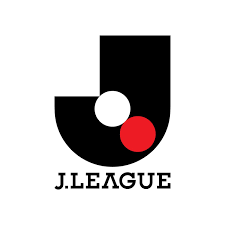A detailed comparison of Eredivisie and J.League in developing top football midfielders. Who produces more technical and successful talents?
Eredivisie vs J.League: Who Develops Better Midfielders in Football?
Midfielders are the heartbeat of any football team—responsible for dictating tempo, transitioning play, and often determining a match’s outcome. In the modern era, the demand for technically sound, tactically intelligent, and physically capable midfielders has skyrocketed. Among the global Dis88 academies and domestic leagues, two systems consistently stand out for player development: the Eredivisie in the Netherlands and the J.League in Japan.
Both leagues are known for their emphasis on youth, strong tactical foundations, and exporting talent to Europe’s elite clubs. But when it comes to developing top-tier midfielders, which league is better: Eredivisie or J.League?
Let’s explore each system’s strengths, their developmental models, notable success stories, and ultimately compare who reigns supreme in producing world-class midfield talent.
Eredivisie: The Dutch Midfield Factory
Historical Context and Philosophy
Dutch football, heavily influenced by Total Football, has always placed a premium on technically gifted and positionally aware midfielders. The Eredivisie serves as a natural stepping stone to Europe’s top leagues thanks to its:
- Tactical education at youth level.
- Open, attacking football that encourages creative expression.
- High involvement of young players in first teams.
Key Clubs in Midfield Development
- Ajax: Arguably the world’s best talent factory. La Masia may rival it, but Ajax has produced world-class midfielders like Clarence Seedorf, Wesley Sneijder, Edgar Davids, and more recently Frenkie de Jong.
- PSV Eindhoven: While known more for attacking talent, PSV has also shaped the careers of deep-lying playmakers and dynamic midfielders.
- Feyenoord: Under Arne Slot, Feyenoord has re-emphasized ball retention, press resistance, and positional versatility in their midfield core.
Modern Success Stories
- Frenkie de Jong (Ajax > Barcelona): A poster child for modern midfielders—calm under pressure, excellent dribbler, positionally flexible.
- Ryan Gravenberch (Ajax > Bayern > Liverpool): A product of the Dutch school with powerful presence and composure.
- Jerdy Schouten (Bologna > PSV): A deeper-lying midfielder making strides in both Serie A and Eredivisie.
Eredivisie clubs integrate youth early. Players like Kenneth Taylor, Quinten Timber, and Joey Veerman are all gaining top-level experience in their early 20s.
J.League: The Rising Asian Development Hub
Cultural Roots and Modern Evolution
Japan’s footballing philosophy is rooted in discipline, technique, and tactical structure. The J.League has taken massive strides since its inception in 1993, and in recent years, Japanese midfielders have become increasingly sought after by European clubs.
Key traits emphasized in Japanese development:
- Short passing and quick combinations.
- Spatial awareness and stamina.
- Work rate and adaptability.
Development Infrastructure
Japan’s national football curriculum has aligned with the JFA’s (Japan Football Association) emphasis on:
- Technical drills from a young age.
- High-level coaching education.
- Overseas exposure through youth tournaments and European loans.
Clubs Leading the Way
- FC Tokyo, Kawasaki Frontale, Yokohama F. Marinos, and Cerezo Osaka have produced a steady stream of midfielders now plying their trade in Europe.
Breakout Names
- Daichi Kamada (Eintracht Frankfurt > Lazio): A creative and unpredictable attacking midfielder with great movement off the ball.
- Wataru Endo (Liverpool): Combines defensive solidity with tidy distribution, captained Stuttgart and the Japanese national team.
- Ritsu Doan (SC Freiburg): Transitioned from a winger to a more central role, highlighting versatility.
- Ao Tanaka (Fortuna Düsseldorf): A technically proficient midfielder with good reading of the game.
The J.League’s emphasis on tactical discipline and mental resilience has helped its midfielders adapt seamlessly in Bundesliga, Ligue 1, and Premier League environments.
Statistical Comparison
| Feature | Eredivisie | J.League |
|---|---|---|
| Average debut age for midfielders | 18–19 | 20–21 |
| Exports to Top 5 European Leagues | High (Ajax, PSV-led) | Growing (Bundesliga-led) |
| Tactical Creativity | Strong (free-roaming play) | Moderate (disciplined roles) |
| Defensive Midfielder Output | Moderate | Strong |
| Attacking Midfielder Output | Very High | Moderate |
| Pass Completion Rate | High | Very High |
| Stamina and Pressing Intensity | Moderate | Very High |
Scouting Trends
European clubs often view Eredivisie midfielders as offensive engines—creative, ball-progressing types who can operate under pressure. In contrast, J.League midfielders are often prized for:
- Tactical discipline.
- Defensive work rate.
- High adaptability.
This leads to differing types of exports:
- Eredivisie → La Liga/Premier League for creative roles.
- J.League → Bundesliga for balanced midfield profiles.
Challenges Faced
Eredivisie:
- Risk of overexposing youth to top-level football too soon.
- Financial pressure to sell early can stunt development.
- Defensive robustness sometimes lacking.
J.League:
- Limited international exposure prior to transfers.
- Adapting to European tempo and physicality remains a challenge for some.
- Perceived ceiling due to conservative attacking style.
Global Impact and National Teams
The Dutch national team has historically revolved around elite midfielders—from Rijkaard and Seedorf to van de Beek and de Jong. Meanwhile, Japan’s recent World Cup performances (especially 2022) have highlighted the growth of its midfield structure, with players like Endo and Kamada standing out on the global stage.
Both countries have built identities around intelligent midfield play, but their systems yield different strengths:
- Netherlands focuses on creativity and positional flexibility.
- Japan excels in balance, pressing, and endurance.
Conclusion: Who Develops Better Midfielders?
There’s no definitive answer—but here’s a summary:
- If you’re seeking creative playmakers and deep-lying technical controllers, the Eredivisie wins.
- If you want tactically disciplined, hard-working, defensively sharp midfielders, the J.League shines.
In truth, both leagues have contributed immensely to modern football’s midfield evolution. The Eredivisie remains a top-tier incubator of world-class midfielders, but the J.League is rapidly closing the gap, particularly with its export success in Germany and beyond.



